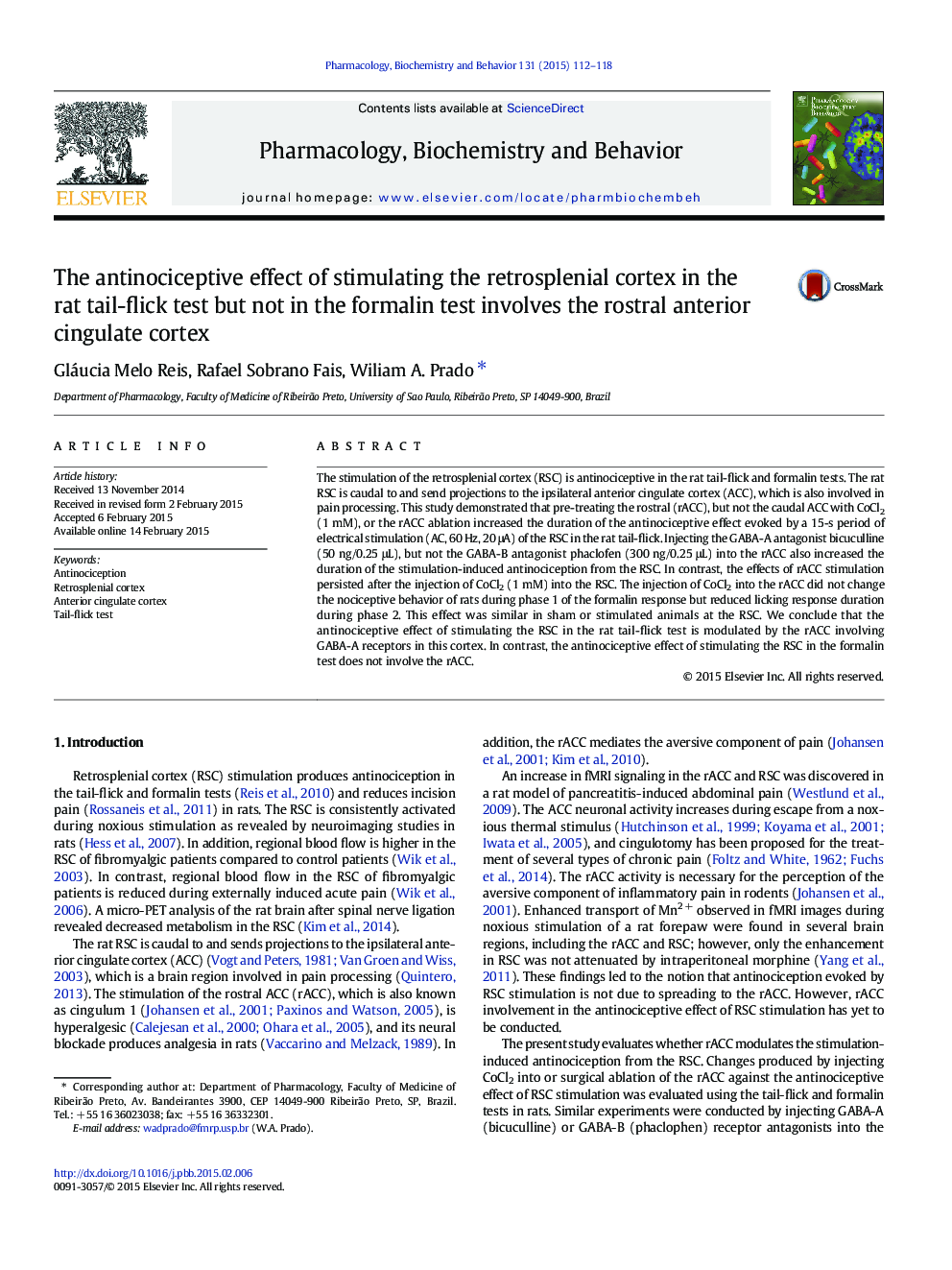| کد مقاله | کد نشریه | سال انتشار | مقاله انگلیسی | نسخه تمام متن |
|---|---|---|---|---|
| 8350691 | 1541853 | 2015 | 7 صفحه PDF | دانلود رایگان |
عنوان انگلیسی مقاله ISI
The antinociceptive effect of stimulating the retrosplenial cortex in the rat tail-flick test but not in the formalin test involves the rostral anterior cingulate cortex
ترجمه فارسی عنوان
اثر ضددردی تحریک کورتکس راتوسپنتنی در آزمون تست دم فلک، اما نه در تست فرمالین، شامل کورتکس قدامی روسترال
دانلود مقاله + سفارش ترجمه
دانلود مقاله ISI انگلیسی
رایگان برای ایرانیان
کلمات کلیدی
ضد انعقاد، قشر انتروسپلنیال، قشر مفاصل قدامی قدامی تست تلخ تلنگر،
موضوعات مرتبط
علوم زیستی و بیوفناوری
بیوشیمی، ژنتیک و زیست شناسی مولکولی
زیست شیمی
چکیده انگلیسی
The stimulation of the retrosplenial cortex (RSC) is antinociceptive in the rat tail-flick and formalin tests. The rat RSC is caudal to and send projections to the ipsilateral anterior cingulate cortex (ACC), which is also involved in pain processing. This study demonstrated that pre-treating the rostral (rACC), but not the caudal ACC with CoCl2 (1 mM), or the rACC ablation increased the duration of the antinociceptive effect evoked by a 15-s period of electrical stimulation (AC, 60 Hz, 20 μA) of the RSC in the rat tail-flick. Injecting the GABA-A antagonist bicuculline (50 ng/0.25 μL), but not the GABA-B antagonist phaclofen (300 ng/0.25 μL) into the rACC also increased the duration of the stimulation-induced antinociception from the RSC. In contrast, the effects of rACC stimulation persisted after the injection of CoCl2 (1 mM) into the RSC. The injection of CoCl2 into the rACC did not change the nociceptive behavior of rats during phase 1 of the formalin response but reduced licking response duration during phase 2. This effect was similar in sham or stimulated animals at the RSC. We conclude that the antinociceptive effect of stimulating the RSC in the rat tail-flick test is modulated by the rACC involving GABA-A receptors in this cortex. In contrast, the antinociceptive effect of stimulating the RSC in the formalin test does not involve the rACC.
ناشر
Database: Elsevier - ScienceDirect (ساینس دایرکت)
Journal: Pharmacology Biochemistry and Behavior - Volume 131, April 2015, Pages 112-118
Journal: Pharmacology Biochemistry and Behavior - Volume 131, April 2015, Pages 112-118
نویسندگان
Gláucia Melo Reis, Rafael Sobrano Fais, Wiliam A. Prado,
